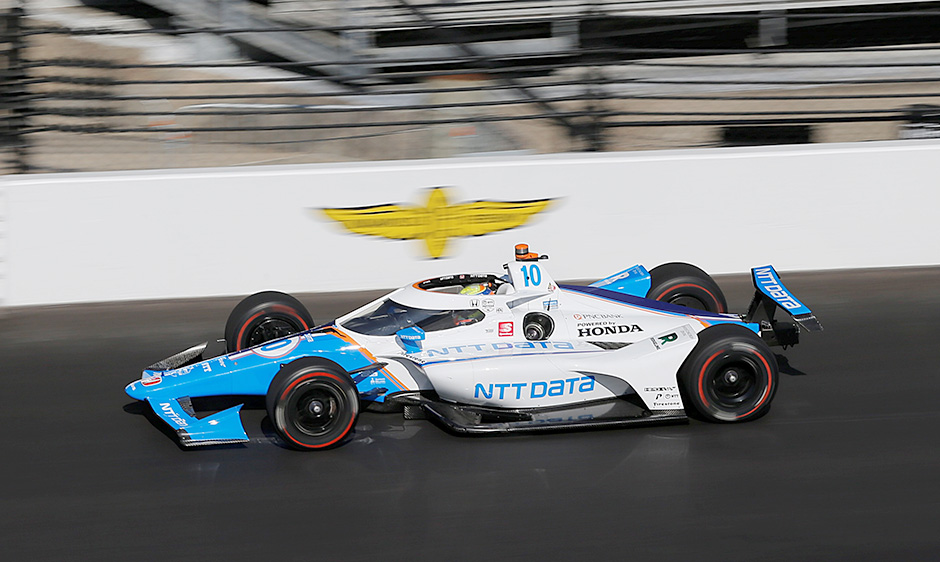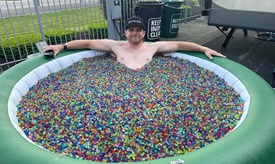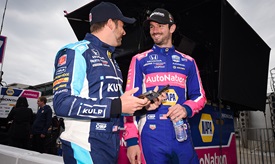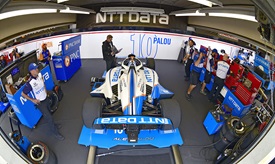NTT Data Driving IMS, Indy 500 into New Future of Technology
MAY 19, 2022
With an appreciation for the past and an eye toward the future, NTT is partnering with Penske Entertainment to expand the fan experience for NTT INDYCAR SERIES fans at home and while at Indianapolis Motor Speedway this May.
This year, NTT is providing race fans with data-driven predictions, such as the best overtake opportunities, head-to-head battles or upcoming pit stop strategies, that will be displayed on INDYCAR social media channels during the 106th Indianapolis 500 presented by Gainbridge on Sunday, May 29.
This data will offer race fans a perspective of the NTT INDYCAR SERIES they’ve never had access to before and gives them more information that adds to the overall experience, thanks to NTT’s Smart Solutions information.
The numbers are impressive: There are 140 sensors spread around each of the 33 cars entered in the 106th Running of the Indianapolis 500 presented by Gainbridge. These sensors produce millions of data points.
How it happens is even more impressive: With this data, NTT creates a digital twin for every race car that uses historical data to mirror the car to make real-time predictions. NTT also is using millions more data points from prior seasons and the first five races of the year to create the most accurate and accommodating experience possible.
“The most exciting aspect of this partnership is what we're doing with all the data,” said Eric Clark, chief digital officer, NTT Data Services. “When we start crunching that data, we can do a lot. Not only is that interesting for the diehard fans that really know what all this data means, but we can start doing predictions and analysis for the newer fans, bring more people into it and help them understand how to how to make sense of that data and make it more interesting and more engaging.”
Additionally, NTT is transforming the 113-year-old Indianapolis Motor Speedway into a smart venue by improving visibility of all aspects of the nearly 1,000-acre facility so that operations and security teams can understand what is happening at different areas of the racetrack faster than ever.
This allows Speedway staff to respond quicker to congestion problems at a certain gate or vehicle flow in a certain area and alleviate issues to allow for a better fan experience. Plus, NTT’s Smart Solutions will update the IMS App every 30 seconds with wait time information at each gate to allow race fans smoother entry into the facility.
This technology was born in Las Vegas in 2018 when NTT partnered with the city to help enhance public safety. Since then, it has been applied in the public sector, healthcare, manufacturing, retail and now sports.
“It's multiple industries that have spawned based on a kernel of technology,” said Bennett Indart, vice president SMART world solutions at NTT. “It's an enabling technology. I always talk about what's the business reason for doing this, and there has to be some sort of a use case. In this case, it's the fan experience, as well as safety and security and situational awareness.
“To me, it's not about the technology. It's always about what's your problem you're trying to solve and how can we help enable it?”
While the business applications of NTT and its Smart Solutions technology for North America’s premier open-wheel series and the Racing Capital of the World are immense, it means more to NTT that its product is helping race fans have a better experience while in a safer venue.
“We've never wanted to be just a logo on the series, right?” said Margo Cooke, vice president of brand, creative, events and sponsorships at NTT Data Services. “We've always wanted the NTT INDYCAR SERIES to be about building those brands together and leveraging technology to do it.”
The Fortune Global 100 company also takes pride in helping the NTT INDYCAR SERIES build off its well-established and renowned technological foundation.
Since IMS was founded in 1909 and the first Indianapolis 500 was held in 1911, this series and this race always have been about developing and improving technology. Be it the first use of a rear-view mirror in 1911, the first 200-mph lap in 1977 or the introduction of the SAFER Barrier in 2002, technology always has led INDYCAR SERIES racing.
This is just another step in that 113-year-old goal. But this time, its direct impact is on the race fans and not the competition.
“This is about helping further the history of the INDYCAR SERIES,” Clark said. “If you think about it, data is becoming bigger and bigger in sports. Well, you think about where we are with technology and data in the NTT INDYCAR SERIES, we're just at the cusp of that right now. We're using it to make it more engaging and more interesting.”



















